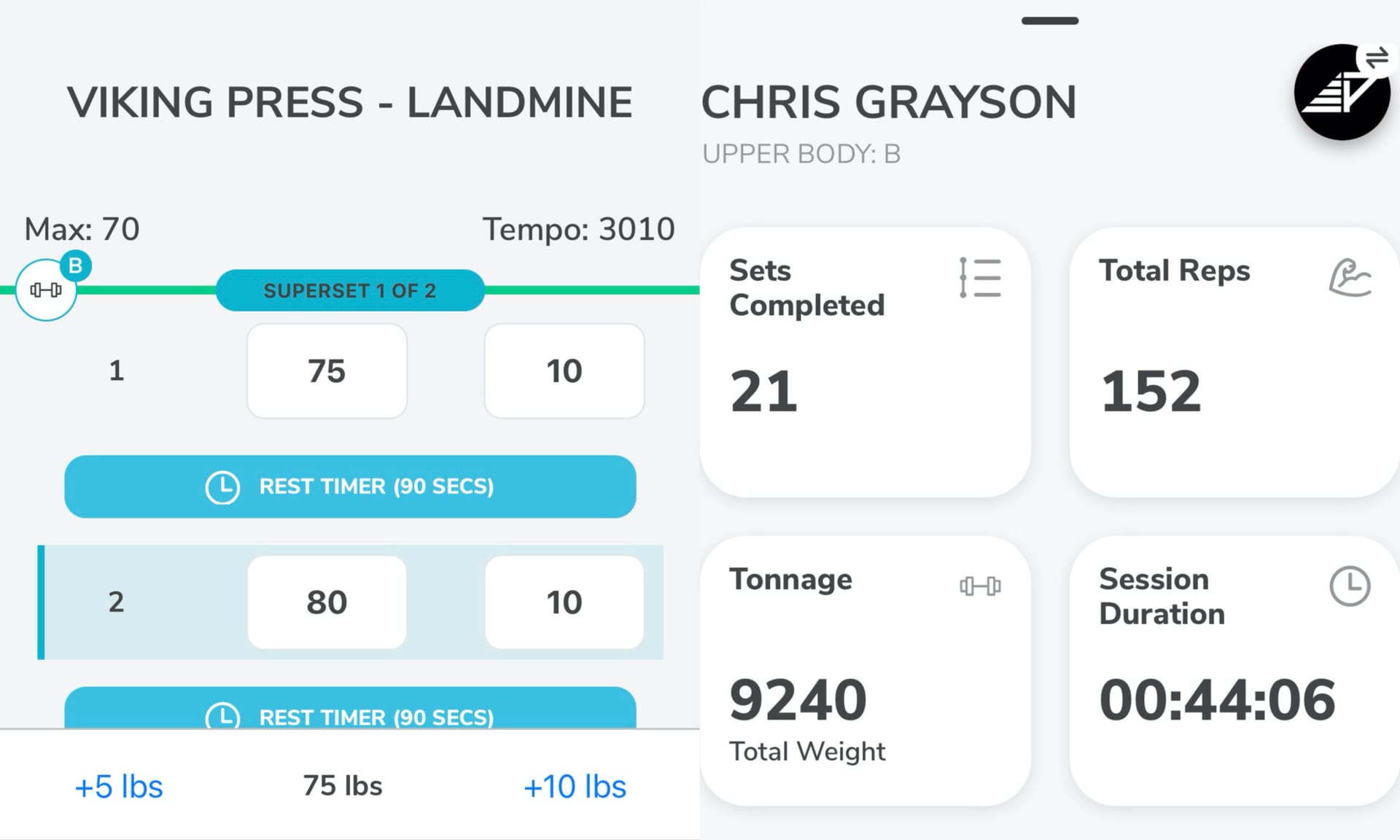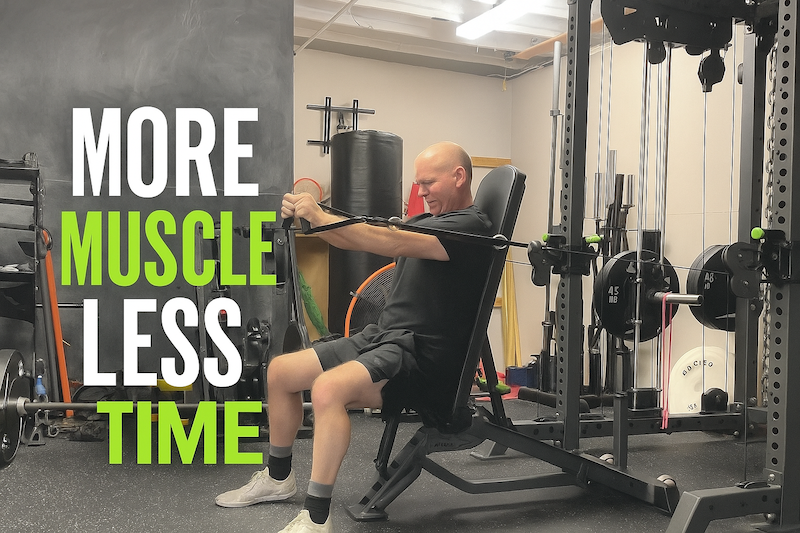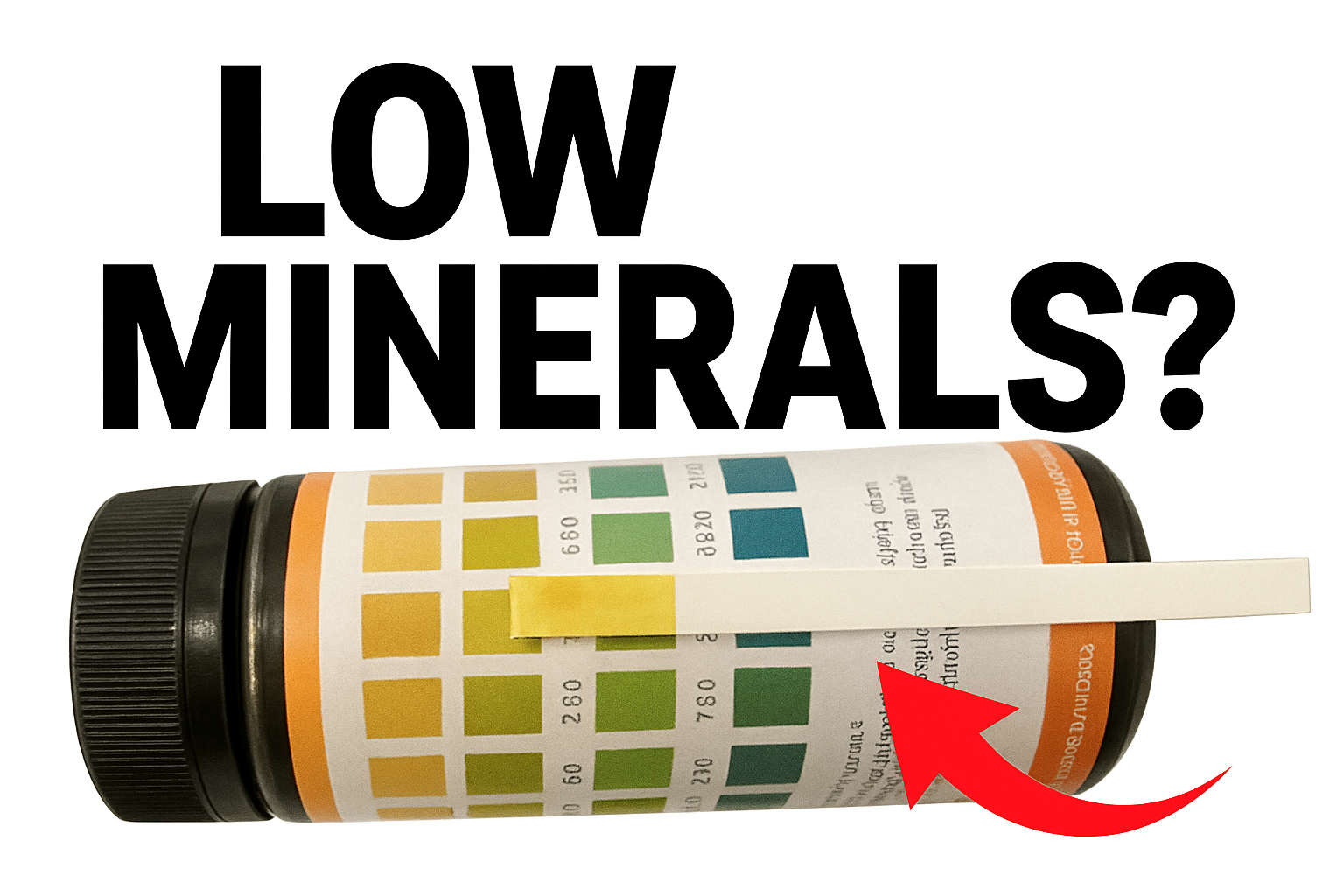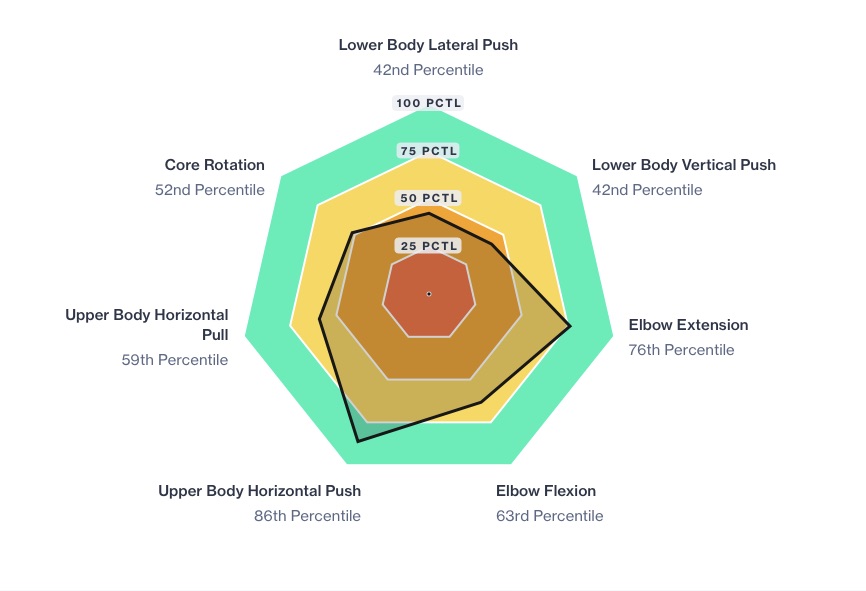The screenshot above is from the training app I use to collect data. I’m discussing progressive overload specifically for my remote clients, or anyone who might come across this article. In contrast, my in-person clients don’t need to worry about this because I ensure that progressive overload is happening.
What is Progressive Overload?
It’s the principle of gradually increasing stress on the body over time to force an adaptation. Without it, progress stalls and your body adapts to the same stimulus and stops improving.
How to Apply Progressive Overload (Beyond Just Adding Weight)
Many people think progressive overload only means lifting heavier weights. That is a big part of it, but there are multiple ways to apply it:
- Increasing resistance: The classic method – adding more weight when good technique allows.
- Increasing reps or sets: Progressing volume, so long as you’re not sacrificing good form.
- Better technique and execution: Controlling tempo, improving range of motion, and eliminating momentum are a few examples of this.
- Increasing training density: More work done in less time (e.g., reduced rest periods, performing supersets).
- Greater intensity: Using techniques like rest-pause, drop sets, or specific tempo work.
The Key to Sustainable Overload: Avoiding Burnout & Injury
- Progressive overload doesn’t mean maxing out every workout.
- Strength and muscle gains happen when overload is applied strategically, not recklessly.
Key strategies:
- Small, incremental increases (2.5-5% weight jumps, an extra repetition, better control throughout the exercise)
- Wave-loading & cycling intensity– not pushing to failure every set and with every workout.
- Listening to recovery signals—fatigue management is as important as load progressions. This is why using tools like HRV (Heart Rate Variability, or using the Hooper Mackinnon Questionnaire to dictate your training) is smart training.
Common Mistakes That Kill Progress
- Lifting too heavy, too soon: Can lead to sloppy reps (sub-par form or execution).
- Ignoring technique in favor of weight: Sacrificing range of motion or the desired tempo of the exercise can be quite a common issue.
- Not tracking progress: If you’re not measuring, you are guessing.
- Doing the exact same workout for too long without change: Adaptation stops when stress isn’t increasing. In order to force an adaptation, stress is required. This is often referred to as rate of adaptation.
Takeaway: Make Progressive Overload Work for You
The best overload method depends on your experience level, training phase, and goals.
- For Strength: Prioritize increasing load while keeping reps low (1-6 reps per set at 80-95% of your 1-rep max). Strength gains come from lifting heavier weights with lower reps and longer rest periods (2-5 minutes) to maximize neural efficiency and force production.
- For Hypertrophy (Muscle Growth): Focus on a mix of load, volume, and execution—generally 6-15 reps per set at 65-80% of your 1-rep max.
Progressive overload here can come from adding weight, increasing reps, improving control (tempo), or increasing training density. Volume. Some other important aspects for gaining muscle are: stability, good resistance profile, alignment, and tension.
- For Endurance & Work Capacity: Increase total volume (higher reps per set, shorter rest) or training density (more work in less time). Typically 12-20+ reps per set at 50-70% of your 1-rep max with shorter rest (30-60 seconds).
- Recovery dictates adaptation – train hard, but recover just as well. I always tell people that your nutrition plan must match the demands of your training. If you constantly stress the body, but are under-nourished, this is a recipe for getting injured, including non-contact injuries for athletes.
Regardless of your goal, progressive overload is a fundamental principle and should be applied gradually to avoid injury and maximize long-term results. Track your lifts, make small weekly progressions, and adjust based on performance and recovery.




